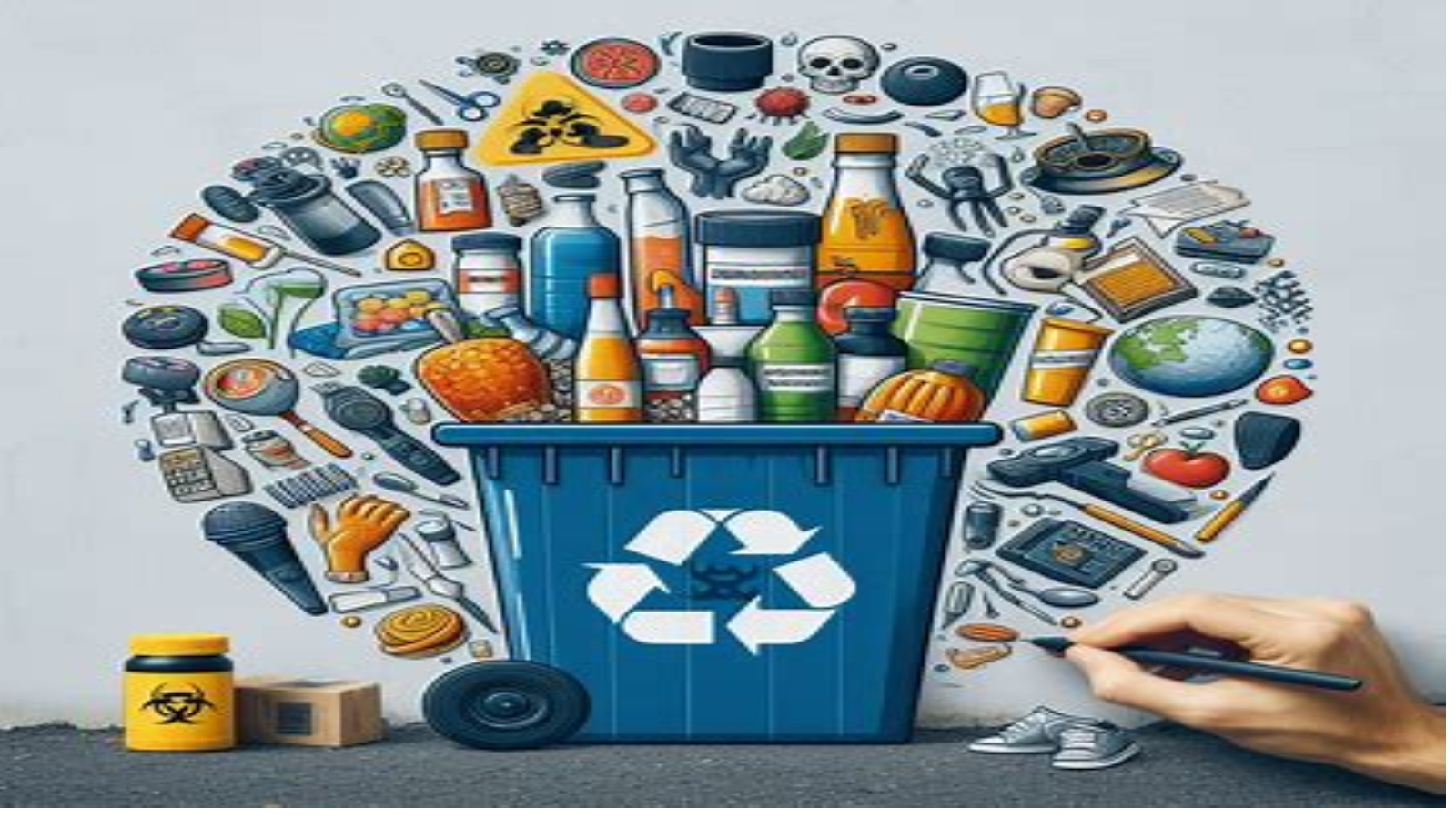
1. Purpose
The purpose of this SOP is to establish a standardized procedure for the safe, efficient, and compliant disposal of expired products to ensure environmental safety and regulatory compliance.
2. Scope
This procedure applies to all departments and personnel involved in the handling, storage, and disposal of expired products within the organization.
3. Definitions
- Expired Products: Items that have surpassed their designated shelf life and are no longer suitable for use or sale.
- Waste Disposal Contractor: A certified external entity responsible for the proper disposal of waste materials.
4. Responsibilities
- Department Managers: Ensure compliance with this SOP within their respective departments.
- Warehouse Staff: Identify, segregate, and document expired products.
- Environmental Health and Safety (EHS) Team: Oversee the disposal process and ensure adherence to environmental regulations.
- Waste Disposal Contractor: Handle the collection, transport, and final disposal of expired products.
5. Procedure
5.1 Identification of Expired Products
- 5.1.1 Review inventory records regularly to identify products nearing expiration.
- 5.1.2 Mark products with less than three months to expiration with a color-coded label for easy identification.
- 5.1.3 Conduct monthly audits to identify expired products in storage areas.
5.2 Segregation and Documentation
- 5.2.1 Segregate expired products from active inventory to prevent accidental use.
- 5.2.2 Record details of expired products including product name, batch number, quantity, and expiration date in the Expired Products Log.
- 5.2.3 Notify the EHS team and the waste disposal contractor of the need for disposal.
5.3 Preparation for Disposal
- 5.3.1 Package expired products in suitable containers to prevent spillage or contamination.
- 5.3.2 Label containers with the following information:
- Product name
- Expiration date
- Hazard classification (if applicable)
- 5.3.3 Store packaged expired products in a designated, secure area until disposal.
5.4 Disposal Process
- 5.4.1 Schedule a pickup with the certified waste disposal contractor.
- 5.4.2 Ensure the waste disposal contractor provides proper documentation, including a waste manifest and proof of disposal.
- 5.4.3 Supervise the handover of expired products to the waste disposal contractor to ensure compliance with safety and regulatory requirements.
5.5 Record Keeping
- 5.5.1 Maintain records of all expired products disposed of, including:
- Expired Products Log
- Waste manifests
- Certificates of disposal
- 5.5.2 Review and update records quarterly to ensure accuracy and completeness.
6. Compliance and Monitoring
- 6.1 Conduct regular internal audits to ensure adherence to this SOP.
- 6.2 Review disposal records and practices during audits to identify areas for improvement.
- 6.3 Report non-compliance or irregularities to senior management for corrective action.
7. Training
- 7.1 Provide training to all relevant personnel on the identification, handling, and disposal of expired products.
- 7.2 Conduct refresher training annually or when there are changes to the SOP or regulatory requirements.
8. Safety Considerations
- 8.1 Ensure personnel handling expired products wear appropriate personal protective equipment (PPE).
- 8.2 Follow all safety protocols to prevent exposure to hazardous materials.
- 8.3 Immediately report any spills, leaks, or accidents to the EHS team.
9. References
- 9.1 Local and national regulations on waste management.
- 9.2 Industry best practices for the disposal of expired products.
- 9.3 Company policies on environmental health and safety.
10. Revision History
- 10.1 Document all revisions to the SOP, including the date of change and a summary of modifications.
- For more articles, Kindly Click here.
- For pharmaceutical jobs, follow us on LinkedIn
- For Editable SOPs in word format contact us on info@pharmaceuticalcarrier.com
- For more information kindly follow us on pharmaguidelines.co.uk

1. Purpose
The purpose of this SOP is to establish standardized procedures for the handling of Investigational Products (IPs) in clinical research to ensure their integrity, security, and compliance with regulatory requirements.
2. Scope
This SOP applies to all personnel involved in the handling of IPs within the clinical research setting, including receipt, storage, inventory management, dispensing, return, and disposal.
3. Definitions
- Investigational Product (IP): A pharmaceutical form of an active ingredient or placebo being tested or used as a reference in a clinical trial.
- GCP: Good Clinical Practice; an international ethical and scientific quality standard for designing, conducting, recording, and reporting trials.
- CRA: Clinical Research Associate; an individual who monitors the progress of clinical trials on behalf of the sponsor.
- ICH: International Council for Harmonisation of Technical Requirements for Pharmaceuticals for Human Use.
4. Responsibilities
- Principal Investigator (PI): Ensures overall compliance with the SOP and regulatory requirements.
- Clinical Research Coordinator (CRC): Manages day-to-day handling of IPs including receipt, storage, and documentation.
- Pharmacist: Oversees storage and dispensing of IPs, ensuring proper handling and record-keeping.
- Clinical Research Associate (CRA): Monitors IP handling processes and ensures adherence to protocols and GCP guidelines.
5. Handling Procedures
5.1 Receipt of Investigational Products
- Documentation: Verify shipment documentation upon receipt against the shipping manifest.
- Inspection: Check the IPs for integrity, correct labeling, and packaging. Document any discrepancies or damage.
- Temperature Recording: Record the temperature data during shipment to ensure compliance with storage conditions.
- Acknowledgment: Sign and date the receipt confirmation documents and notify the sponsor of the receipt.
5.2 Storage Requirements
- Storage Conditions: Store IPs according to the specified conditions (e.g., temperature, humidity) detailed in the protocol.
- Security: Secure the storage area with restricted access to authorized personnel only.
- Monitoring: Continuously monitor and record storage conditions. Use alarm systems to alert deviations from specified conditions.
- Labeling: Clearly label all storage areas and IP containers with appropriate identifiers and hazard warnings.
5.3 Inventory Management
- Inventory Log: Maintain a detailed log of all IPs received, dispensed, returned, and disposed of.
- Periodic Audits: Conduct regular inventory audits to ensure accuracy and compliance.
- Record Discrepancies: Immediately document and investigate any discrepancies between physical inventory and records.
5.4 Dispensing Procedures
- Prescription Verification: Verify the prescription against the clinical trial protocol before dispensing.
- Patient Information: Ensure that patients are provided with clear instructions and information about the IP.
- Documentation: Record each dispensation in the inventory log, including patient ID, quantity dispensed, and date.
5.5 Return and Disposal
- Returns: Document and return any unused IPs to the sponsor according to their guidelines.
- Disposal: Dispose of IPs according to local regulations and sponsor instructions. Document the disposal process.
- Destruction Certificates: Obtain certificates of destruction if applicable and maintain them in the trial master file.
6. Documentation
- Maintain accurate and complete records of all IP handling activities, including receipt, storage, dispensing, return, and disposal.
- Ensure documentation is readily available for inspection by regulatory authorities and sponsor monitors.
7. Training
- Initial Training: Provide comprehensive training for all personnel on this SOP before they handle IPs.
- Ongoing Training: Conduct periodic refresher training sessions and update personnel on any SOP changes.
8. Quality Control and Assurance
- Implement quality control measures to ensure adherence to this SOP.
- Conduct regular internal audits and participate in external audits by sponsors and regulatory authorities.
- Address and rectify any findings or non-compliances promptly.
9. Safety Considerations
- Follow all safety protocols related to the handling of pharmaceutical products.
- Use appropriate personal protective equipment (PPE) when handling IPs.
- Ensure emergency procedures are in place for handling spills, exposure, or other safety incidents.
10. Review and Revision History
- This SOP will be reviewed annually or as necessary to reflect changes in regulations or procedures.
- Document any revisions in the SOP revision history log, including the date and description of changes.
- For more articles, Kindly Click here.
- For pharmaceutical jobs, follow us on LinkedIn
- For Editable SOPs in word format contact us on info@pharmaceuticalcarrier.com
- For more information kindly follow us on pharmaguidelines.co.uk

1. Introduction
1.1 Purpose
This Standard Operating Procedure (SOP) outlines the process for handling returned goods to ensure consistency, efficiency, and compliance with company policies and relevant regulations.
1.2 Scope
This SOP applies to all employees involved in the return process, including customer service representatives, warehouse staff, and inventory management personnel.
1.3 Definitions
- Return Authorization (RA): A document or electronic form that authorizes the return of goods.
- Returned Merchandise Authorization (RMA): Another term for Return Authorization.
- Defective Goods: Items that are damaged or not functioning as intended.
- Non-defective Goods: Items returned for reasons other than defect, such as customer dissatisfaction.
2. Return Authorization Process
2.1 Initiating a Return
- Customer Request: Customers must contact customer service to initiate a return.
- Verification: Customer service verifies the purchase and the reason for the return.
- Issuance of RA/RMA: If the return is approved, customer service issues a RA/RMA number and provides return instructions.
2.2 Criteria for Return Approval
- Timeframe: Returns must be requested within 30 days of purchase.
- Condition: Goods must be in original packaging and condition unless defective.
- Proof of Purchase: A receipt or order confirmation is required.
3. Receiving Returned Goods
3.1 Initial Inspection
- Verification: Warehouse staff verify the RA/RMA number and ensure the return is authorized.
- Condition Check: Inspect the condition of the returned goods and categorize them as defective or non-defective.
3.2 Documentation
- Return Log: Record the return in the return log, noting the RA/RMA number, date, customer details, and condition of the goods.
- Inspection Report: Complete an inspection report for defective items, detailing the nature of the defect.
4. Processing Returns
4.1 Non-defective Goods
- Restocking: Non-defective goods in resaleable condition are restocked in inventory.
- Refund/Exchange: Process the customer’s refund or exchange according to company policy.
4.2 Defective Goods
- Repair/Replacement: Determine if the item can be repaired or replaced.
- Disposal: If the item cannot be repaired or replaced, follow proper disposal procedures.
- Supplier Returns: Return defective items to the supplier if applicable, following supplier guidelines.
5. Inventory Management
5.1 Updating Records
- Inventory Adjustment: Update inventory records to reflect the return and restocking or disposal of items.
- Cycle Counts: Include returned goods in regular cycle counts to ensure inventory accuracy.
5.2 Reporting
- Return Analysis: Generate and review reports on returns to identify trends and areas for improvement.
- Feedback Loop: Provide feedback to relevant departments (e.g., quality control, purchasing) based on return analysis.
6. Customer Communication
6.1 Acknowledgment
- Confirmation: Send the customer a confirmation email once the return is received and inspected.
- Follow-up: Inform the customer of the status of their return, including any refund or replacement details.
6.2 Resolution
- Timely Processing: Ensure all returns are processed within 7 business days of receipt.
- Customer Satisfaction: Address any customer concerns or disputes promptly to maintain satisfaction.
7. Compliance and Training
7.1 Regulatory Compliance
- Legal Requirements: Ensure all return processes comply with relevant local and international laws and regulations.
- Record Keeping: Maintain records of all returns for a minimum of 2 years or as required by law.
7.2 Staff Training
- Training Programs: Conduct regular training sessions for all staff involved in the return process.
- Procedure Updates: Update training materials and SOPs regularly to reflect changes in policy or procedure.
8. Continuous Improvement
8.1 Feedback Collection
- Customer Feedback: Collect and analyze customer feedback on the return process.
- Internal Feedback: Encourage staff to provide suggestions for improving return handling procedures.
8.2 Process Review
- Regular Audits: Conduct regular audits of the return process to identify inefficiencies or non-compliance.
- SOP Revisions: Revise this SOP as needed based on audit findings and feedback.
9. Conclusion
9.1 Summary
This SOP provides a comprehensive framework for handling returned goods efficiently and effectively, ensuring customer satisfaction and regulatory compliance.
9.2 Contact Information
For any questions or further information, employees should contact the Quality Assurance Manager or the Customer Service Supervisor.



